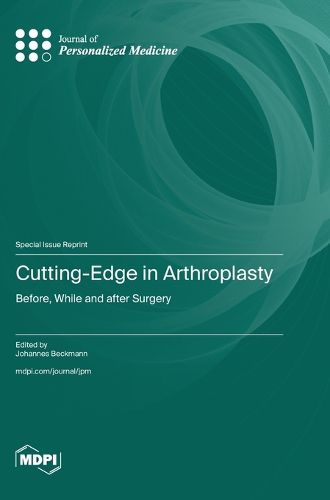Readings Newsletter
Become a Readings Member to make your shopping experience even easier.
Sign in or sign up for free!
You’re not far away from qualifying for FREE standard shipping within Australia
You’ve qualified for FREE standard shipping within Australia
The cart is loading…






This title is printed to order. This book may have been self-published. If so, we cannot guarantee the quality of the content. In the main most books will have gone through the editing process however some may not. We therefore suggest that you be aware of this before ordering this book. If in doubt check either the author or publisher’s details as we are unable to accept any returns unless they are faulty. Please contact us if you have any questions.
Personalized medicine was introduced in arthroplasty several years ago to further improve outcomes. Compared to the early beginnings of arthroplasty, the range of implant types, implant sizes, geometrical forms, and implantation techniques has grown enormously over the last few decades to more effectively deal with patients' needs and anatomy and to improve outcomes. Several attempts failed, several were successful, and others were partially successful or experienced a renaissance and advancement. However, it is not just the "hardware" that makes the difference. The "software" of peri-operative medicine that deals with the patient and the tissues around the joints also became a milestone in treatment. Navigation, gender implants, PSI (patient-specific instrumentations), customized implants, robotics, early mobilization, minimal-invasive surgery, and altered analgesic and anesthetic care are some of the examples.
Another significant issue and remaining problem for the coming years and decades is revision arthroplasty of failed implants. Even with optimized implantation and improved materials, the more active patients who undergo operations today will potentially need new surgeries in the future. Removal of implants, infection, and osteolysis can lead to significant bone loss, which needs to be addressed.
This Special Issue aims to address the cutting-edge topics that concern arthroplasty and the period before, during, and after the surgery.
$9.00 standard shipping within Australia
FREE standard shipping within Australia for orders over $100.00
Express & International shipping calculated at checkout
This title is printed to order. This book may have been self-published. If so, we cannot guarantee the quality of the content. In the main most books will have gone through the editing process however some may not. We therefore suggest that you be aware of this before ordering this book. If in doubt check either the author or publisher’s details as we are unable to accept any returns unless they are faulty. Please contact us if you have any questions.
Personalized medicine was introduced in arthroplasty several years ago to further improve outcomes. Compared to the early beginnings of arthroplasty, the range of implant types, implant sizes, geometrical forms, and implantation techniques has grown enormously over the last few decades to more effectively deal with patients' needs and anatomy and to improve outcomes. Several attempts failed, several were successful, and others were partially successful or experienced a renaissance and advancement. However, it is not just the "hardware" that makes the difference. The "software" of peri-operative medicine that deals with the patient and the tissues around the joints also became a milestone in treatment. Navigation, gender implants, PSI (patient-specific instrumentations), customized implants, robotics, early mobilization, minimal-invasive surgery, and altered analgesic and anesthetic care are some of the examples.
Another significant issue and remaining problem for the coming years and decades is revision arthroplasty of failed implants. Even with optimized implantation and improved materials, the more active patients who undergo operations today will potentially need new surgeries in the future. Removal of implants, infection, and osteolysis can lead to significant bone loss, which needs to be addressed.
This Special Issue aims to address the cutting-edge topics that concern arthroplasty and the period before, during, and after the surgery.